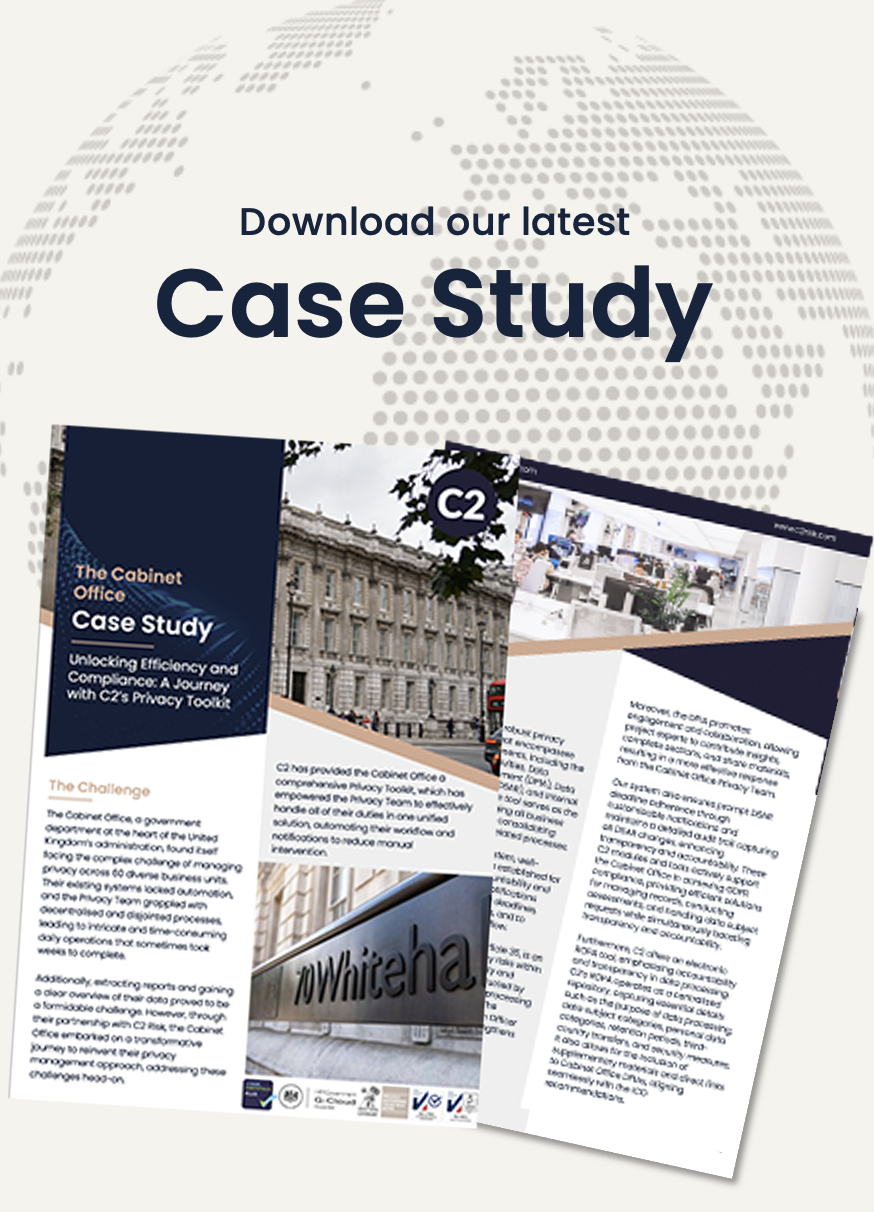The Essential Guide to Risk Management for SMEs

The Essential Guide to Risk Management for SMEs
In the business world, small and medium-sized enterprises (SMEs) face numerous challenges and uncertainties. From economic fluctuations to technological disruptions, the potential risks are abundant. This is where the significance of risk management comes into play.
Below, we’ll delve into what risk management is and why it is a crucial aspect for the growth and sustainability of SMEs. Additionally, we’ll explore how affordable and efficient solutions, like C2, can make risk management accessible to SMEs without breaking the bank.
What is Risk Management?
Risk management is a proactive and systematic process that involves identifying, assessing, and mitigating potential risks to achieve business objectives effectively. It is not about avoiding risks altogether but rather about making informed decisions to navigate uncertainties and capitalise on opportunities. In essence, risk management is a strategic approach that safeguards your business from potential threats while optimising the potential for success.
Why you Need Risk Management
Risk management is not just smart, it’s essential, especially given the alarming surge in data breaches, with the total number reaching a staggering 6 billion in 2023! Small and medium-sized companies often perceive risk management as an expensive luxury, leaving them more exposed to potential risks. Without proper risk management, small businesses become vulnerable to financial losses, legal issues, and damage to their reputation. Other than mitigating risks, there are many reasons why SMEs need to implement a risk management solution:
- Protecting Your Bottom Line – Unforeseen events such as operational downtime due to geographical crises, economic downturns, or supplier dependency can severely impact SMEs. Implementing risk management strategies helps protect your bottom line by identifying and preparing for potential threats.
- Enhancing Decision-Making – A well-structured risk management framework provides SMEs with valuable insights into potential challenges. This, in turn, enables informed decision-making, helping businesses allocate resources efficiently and seize opportunities.
- Securing Stakeholder Trust – Clients, investors, and other stakeholders are more likely to trust and engage with businesses that demonstrate a commitment to risk management. It signals responsibility and a dedication to long-term success, fostering positive relationships.
- Compliance and Legal Obligations – In many industries, compliance with regulations and legal obligations is non-negotiable. A robust risk management system ensures that SMEs meet these requirements, preventing potential legal consequences and financial penalties.
The Role of C2’s Cost-Effective Solutions
At C2, we’ve transformed risk management by developing solutions that not only pinpoint challenges like manual spreadsheets, limited risk visibility, and time-consuming processes but also emphasise affordability without sacrificing quality. Our easy-to-use Vendor Risk Management platform provides a secure, cohesive, and transparent solution. We streamline the onboarding process, ensuring quicker assessment results. Additionally, our services include expert analyst input, complemented by superior Open Source Intelligence (OSINT), enhancing the depth and accuracy of our assessments, saving you up to 50% in resource time.
Affordability Tailored for SMEs
We understand that SMEs operate within budget constraints. This is why our services come at a more economical price point, making C2 an attractive option for businesses of all sizes. SMEs no longer need to break the bank to leverage our capabilities. Our commitment to cost-effectiveness does not mean compromising on results; in fact, we take pride in delivering outcomes comparable, if not superior, to those of established firms.
How to Implement Risk Management
Implementing effective risk management involves a structured approach to identify, assess, prioritise, and mitigate risks.
- Conduct a thorough assessment of potential risks, identifying key areas that require attention.
- Utilise cost-effective tools and technologies, such as C2’s Vendor Risk Management, to streamline the risk assessment process.
- Ensure a streamlined onboarding process for faster and more efficient results.
- Emphasise a prioritised approach to risk management, focusing on high-impact areas first.
- Leverage open-source intelligence (OSINT) to enhance the quality of insights.
- Consider employee training and involvement to create a culture of risk awareness within your organisation.
By adopting these steps, you can implement affordable risk management that not only safeguards your business but also aligns with your budget constraints.
Risk management is not just a business practice, it is a foundation for the success and longevity of SMEs. By embracing a proactive approach with affordable solutions, businesses can navigate uncertainties with confidence, safeguard their assets, and position themselves for sustainable growth. Remember, in the world of business, informed risk-taking is often the key to unlocking new heights of success, and with C2’s cost-effective solutions, SMEs can achieve this without breaking the bank.
Check out our blog answering frequently asked questions about VRM, or consider scheduling a demo with one of our team members today to learn more about our Vendor Risk Management.
About C2
C2 is a UK risk management scaleup on a mission to help businesses survive and thrive in the digital economy. C2 helps organisations manage security and compliance in a way that’s unique to their business and that does more than simply ticking off digital checkboxes. C2’s industry-leading platform supports the public and private sectors in managing their threat landscape and improving vendor controls, project, privacy, and ESG risks.



